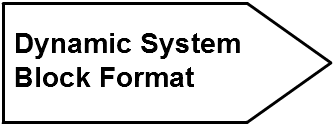nserman@fsb.hr Transfer Function Concept Digest
0. INTRODUCTION
Controlling various physical variables most often relies on negative feedback concept.
Controller detects a deviation between set up and current value and acts back to the controlled process by trying to change the current value in a direction opposite to the deviation. Through this an action of a circular flow influences within loop controller – controlled process – controller is established. Such an arrangement is commonly referred to as closed loop.
Dynamic behavior of closed loop significantly differ from what the controlled process and the controller behaves individually. In situations when dynamic behavior of a closed loop is technically unacceptable, e.g. due to large oscillations, it is not easy to find a remedy. Quite often even a mighty “common sense” might be misleading.
There are plenty of fine textbooks and tutorials on the subject. The following web pages are not intended to substitute them. They contain a compressed digest of the matter. Might be used either as an introductory “first glance” or it can be a refresher to the readers already dealt with the subject.
The following content offers a good foundation for the qualitative analysis approach in controls study and design. Such an approach is most often the best available tool in troubleshooting control loops problems.
A basic assumption here is that closed loop system components behave as linear, lumped-parameters, time-invariant dynamic systems(1) within certain limits and acceptable level of accuracy.
Mathematical model, describing such a system dynamics ends up in a form of an ordinary linear differential equation with constant coefficients or as a set of such equations.
There are two main concepts for analyzing such models:
- State Space Concept
- Transfer Function Concept
State Space Concept relies on a differential equations matrix formulation to represent the system dynamics. It requires a full knowledge of system structure and parameters. The analysis is performed by computer-added matrix calculations. State Space is a powerful mean for quantitative analysis of complex dynamic systems. However, it offers a little ground, if any, for troubleshooting and resolving real world control engineering problems.
Transfer Function Concept, although based on a bit abstract notion of the Laplace transform it presents a firm ground for qualitative analysis approach in solving feedback related control problems.
The following pages offer a brief digest of Transfer Function Concept from a closed loop dynamics point of view.
——————————————————————————-
- Brief description of linear, lumped-parameters and time-invariant dynamic systems is given in chapter 13.



